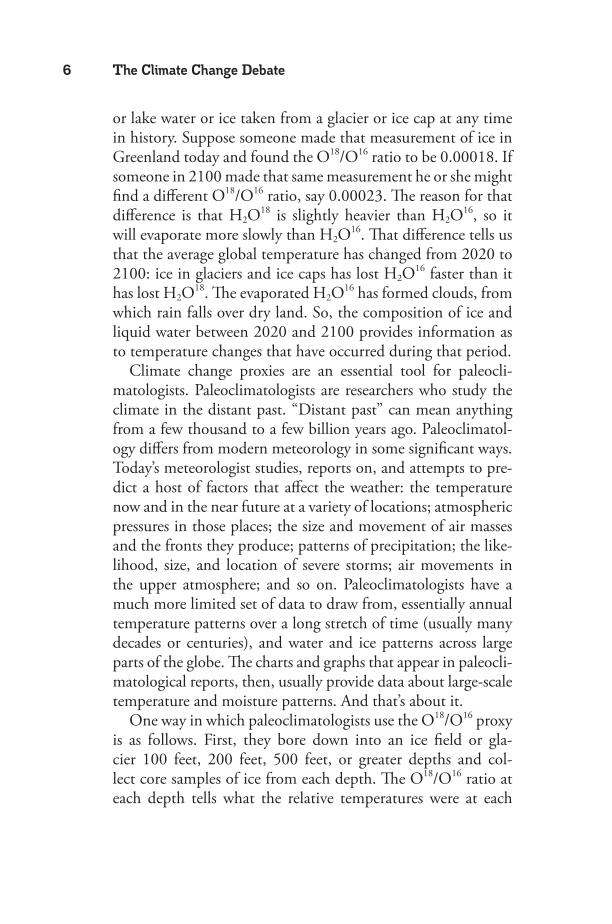6 The Climate Change Debate or lake water or ice taken from a glacier or ice cap at any time in history. Suppose someone made that measurement of ice in Greenland today and found the O18/O16 ratio to be 0.00018. If someone in 2100 made that same measurement he or she might find a different O18/O16 ratio, say 0.00023. The reason for that difference is that H2O18 is slightly heavier than H2O16, so it will evaporate more slowly than H2O16. That difference tells us that the average global temperature has changed from 2020 to 2100: ice in glaciers and ice caps has lost H2O16 faster than it has lost H2O18. The evaporated H2O16 has formed clouds, from which rain falls over dry land. So, the composition of ice and liquid water between 2020 and 2100 provides information as to temperature changes that have occurred during that period. Climate change proxies are an essential tool for paleocli- matologists. Paleoclimatologists are researchers who study the climate in the distant past. “Distant past” can mean anything from a few thousand to a few billion years ago. Paleoclimatol- ogy differs from modern meteorology in some significant ways. Today’s meteorologist studies, reports on, and attempts to pre- dict a host of factors that affect the weather: the temperature now and in the near future at a variety of locations atmospheric pressures in those places the size and movement of air masses and the fronts they produce patterns of precipitation the like- lihood, size, and location of severe storms air movements in the upper atmosphere and so on. Paleoclimatologists have a much more limited set of data to draw from, essentially annual temperature patterns over a long stretch of time (usually many decades or centuries), and water and ice patterns across large parts of the globe. The charts and graphs that appear in paleocli- matological reports, then, usually provide data about large-scale temperature and moisture patterns. And that’s about it. One way in which paleoclimatologists use the O18/O16 proxy is as follows. First, they bore down into an ice field or gla- cier 100 feet, 200 feet, 500 feet, or greater depths and col- lect core samples of ice from each depth. The O18/O16 ratio at each depth tells what the relative temperatures were at each
Document Details My Account Print multiple pages
Print
You have printed 0 times in the last 24 hours.
Your print count will reset on at .
You may print 0 more time(s) before then.
You may print a maximum of 0 pages at a time.









































































































































































































































































































































































